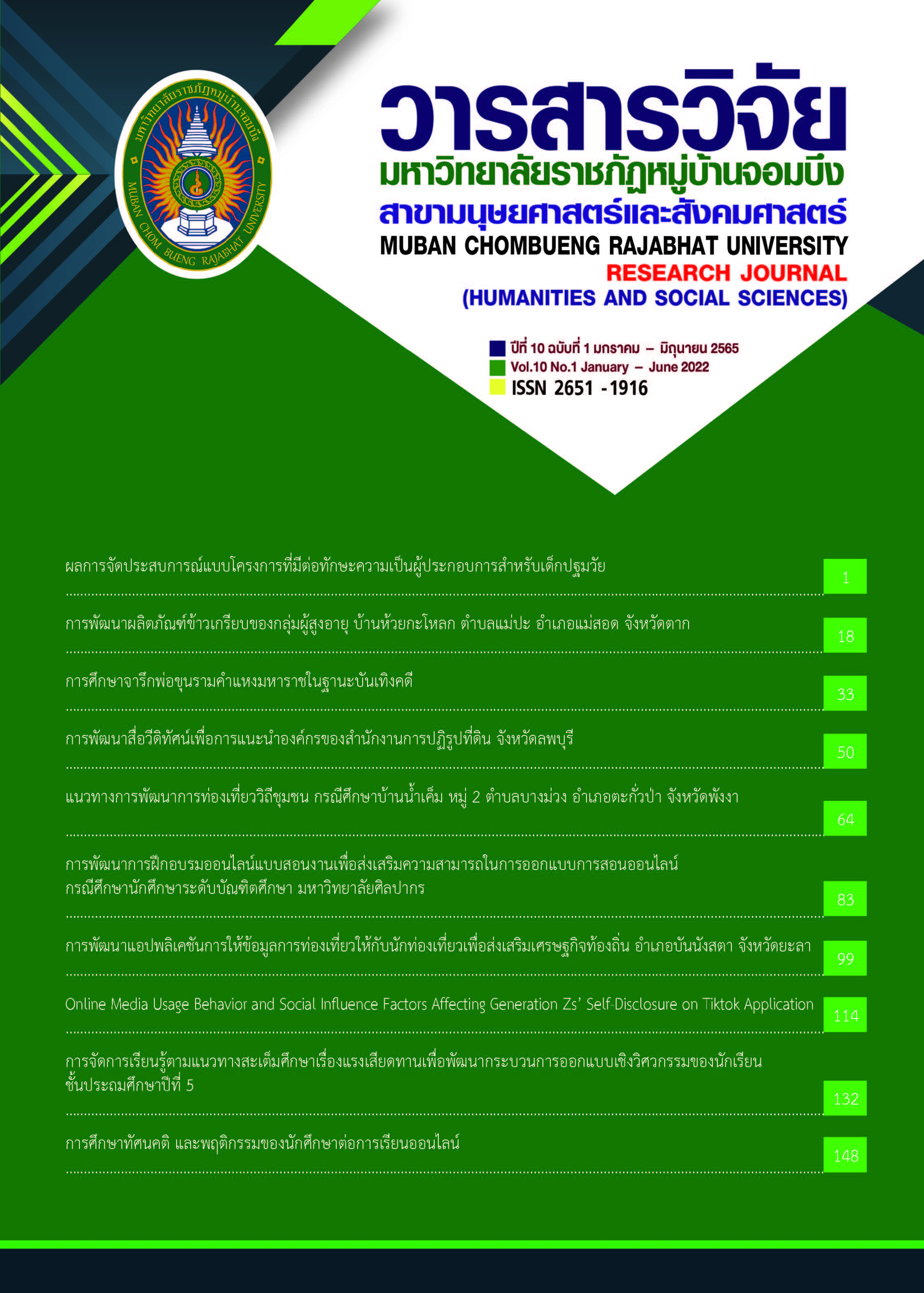Development of Mobile Application to Provide Tourist Plan for Supporting Local Economy in Bannang Sata District, Yala, Thailand
Keywords:
Natural Language Processing, Machine Learning, Data Classification, Navigation SystemAbstract
The research objectives were to 1) develop an application to provide tourism information and support smart travel advice, and 2) create a public relations channel for tourist attractions for Bannang Sata District, Yala Province, using the application as a tool to elevate the local tourism, and take part in building confidence to tourists in visiting the area, and stimulate the sustainable economic system in the area.
The theory of Natural Language Processing was used with Machine Learning using the Naïve Bayes, the method of text classification. The analysis result for Precision was 0.61 and F-measures was 0.70, indicating that the system's travel itinerary recommendations were accurate at 0.61. As for satisfaction from 190 application users, which divided into 3 groups as follows: Group 1: the representatives of the youth in Bannang Sata District. Group 2: business people who operated their businesses in Bannang Sata District. Group 3: Students of Yala Rajabhat University. On average, user satisfaction was at a good level.
References
เลิศพร ภาระสกุล. (2561). Tourism behavior: Annoying behavior of Chinese tourists. Proceeding of the eighth International Conference on sports and exercise science, June, Chulalongkorn University.
K. Nokkaew and R. Kongkachandra, (2017). Semantics-based topic identification for keyphrase extraction. 12th International Conference on Knowledge, Information and Creativity Support Systems, Nagoya, Japan, on November 9-11, 138-142.
K. Nokkaew and R. Kongkachandra, (2018). Keyphrase Extraction as Topic Identification Using Term Frequency and Synonymous Term Grouping. International Joint Symposium on Artificial Intelligence and Natural Language Processing (iSAI-NLP), pp. 1-6, doi: 10.1109/iSAI-NLP.2018.8693001.
V. Sucasas, G. Mantas, S. Althunibat, L. Oliveira, A. Antonopoulos, I. Otung, J. Rodriguez, (2018). A privacy-enhanced OAuth 2.0 based protocol for Smart City mobile applications. Comput. Secur., 74, 258–274.
J. A. Diego-Mas, D. Garzon-Leal, R. Poveda-Bautista, J. Alcaide-Marzal, (2019). User-interfaces layout optimization using eye-tracking, mouse movements and genetic algorithms. Applied ergonomics, 78, 197–209, 2019.
X. Zhou, M. Su, Z. Liu, Y. Hu, B. Sun, G. Feng, (2020). Smart Tour Route Planning Algorithm Based on Na ̈ıve Bayes Interest Data Mining Machine Learning. ISPRS International Journal of Geo-Information, 9(2), 112.
Q. Ye, Z. Zhang, R. Law, (2009). Sentiment classification of online reviews to travel destinations by supervised machine learning approaches. Expert Systems with Applications, 36(3, Part 2), 6527–6535, doi:https: //doi.org/10.1016/j.eswa.2008.07.035.
A. N. Koushik, M. Manoj, N. Nezamuddin, (2020). Machine learning applications in activity-travel behaviour research: a review. Transport reviews, 40(3), 288–311.
J. Hagenauer, M. Helbich, (2017). A comparative study of machine learning classifiers for modeling travel mode choice. Expert Systems with Applications, 78, 273–282.
H.-S. Chiang, T.-C. Huang, (2015). User-adapted travel planning system for personalized schedule recommendation. Information Fusion, 21, 3–17.
Downloads
Published
How to Cite
Issue
Section
License
Copyright (c) 2022 Muban Chombueng Rajabhat University Research Journal (Humanities and Social Science)

This work is licensed under a Creative Commons Attribution-NonCommercial-NoDerivatives 4.0 International License.
Journal of TCI is Licensed under a Creative Commons Attribution-NonCommercial-NoDerivatives 4.0 International (CC BY-NC-ND 4.0) licence, unless otherwise stated, Please read our Policies page for more information on Open Access, copyright and permissions.



